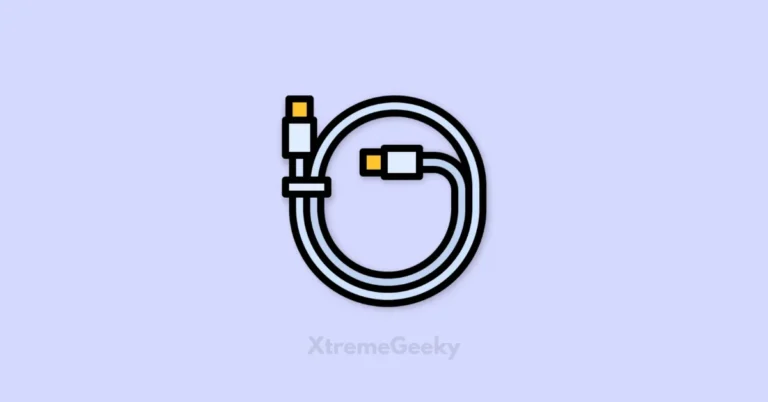USB file transfer is a convenient way to move files from your Android device to your Mac Devices and your windows, but it can be frustrating when it suddenly stops working. If you’re encountering issues with your USB file transfer not functioning as expected, you’re not alone.
In this article, we’ll explore some common reasons behind this problem and provide practical solutions to get your file transfers up and running again. Let’s dive in to fix my mac not showing my android phone.
But before if you don’t how to transfer files from your android device to your MacBook then we suggest you to checkout this detailed article on How to transfer files between android and macOS.
MacBook Not Recognizing Android: Here’s How to Fix It
Not Using Authorised USB Cables
One of the main reasons for encountering file transfer issues is the use of unauthorised USB cables. When you use unapproved or third-party cables, your computer may not recognise your Android device properly. To ensure smooth file transfers and avoid potential problems, it is crucial to use only authorised USB cables.
Apple-authorised USB cables, specifically designed for your device, provide reliable data transmission and compatibility with your Android device and your computer. These authorised cables adhere to the necessary standards, reducing the risk of errors during file transfers.
Im using 4 in 1 USB cable from Stuffcool and it’s pretty fast for transferring my files from Android to Macbook.
By investing in and using authorised USB cables, you can eliminate potential obstacles in the file transfer process and enjoy seamless connectivity between your Android device and computer. Also, read our detailed guide on fixing MacOS Sonoma Mission Control not responding.
If it does work for you then read these below Steps. It might help you to fix when your Mac does not recognise Android devices.
Faulty USB Cable
A faulty USB cable can be a common culprit behind failed file transfers. If the cable is damaged or not transmitting data properly, your computer might not detect your Android device. To check if your USB cable is causing the problem:
- Try using a different USB cable to connect your Android device to the computer.
- Avoid using third-party or low-quality cables, which might not provide adequate data transmission.
Also Read | How to Get YouTube Premium for Cheap
USB Connection Settings
Sometimes, the USB connection settings on your Android device can prevent file transfers. Many Android devices have different connection modes, such as “Charging Only,” “File Transfer,” “PTP,” or “MTP.” Make sure your device is set to the appropriate mode for file transfers:
- Make sure to Unlock your Android device and connect it to the computer via USB.
- On your Android device, make sure that you select the “file transfer” option from the USB settings.
If you love smartphone Homescreen Customization then we recommend you to check out this article on Best Home Screen ideas.
Outdated or Incompatible USB Drivers
One of the primary reasons for USB file transfer problems is outdated or incompatible USB drivers. When the drivers on your computer are not up to date or don’t match your Android device’s specifications, it can lead to connection issues. Also, check out How to Add custom live wallpapers on your Mac
To fix this, follow these steps:
- On your Windows, visit the manufacturer’s website and download the latest USB drivers to fix this Android file transfer issue.
- Install the updated drivers on your computer.
- Reconnect your Android device via USB to see if the file transfer starts working again.
Software Conflicts and Background Apps
Sometimes background apps and conflicting software on your MacBook and windows computer can interfere with the USB file transfer process. To troubleshoot this:
- Close all unnecessary applications running in the background on your computer and Android device.
- Check the Task Manager (Windows) or Activity Monitor (macOS) to identify any processes that might be causing conflicts and terminate them.
Also Checkout | Best Laptops under 50000 for student
Restart Devices
Sometimes, a simple restart can resolve minor connectivity issues:
- Disconnect your Android device from the computer.
- Restart both your Android device and your computer.
- Reconnect the Android device via USB and check if the file transfer is working.
Enable USB Debugging (Advanced Fix)
For advanced users, enabling and disabling the USB debugging on your Android device might helpful to resolve file transfer problems:
- On your Android device, go to “Settings.”
- Scroll down and tap on “About phone.”
- Find the “Build number” entry and tap it seven times to enable Developer options.
- Go back to the main settings and enter “Developer options.”
- Enable “USB debugging.”
Keep in mind that USB debugging is intended for advanced users and should be used with caution.
You Might Like this | 10 Best Android Productivity Apps
Conclusion
USB file transfer issues on your Android device can be frustrating, but with the right troubleshooting steps, you can get your file transfers back on track. By checking and updating USB drivers, ensuring proper USB connection settings, and ruling out hardware issues like faulty cables, you’ll be able to resolve many common problems.
If the issue persists, don’t hesitate to seek help from your device manufacturer’s support or online communities. With patience and persistence, you’ll soon have smooth and hassle-free USB file transfers between your Android device and computer. Happy file sharing!



